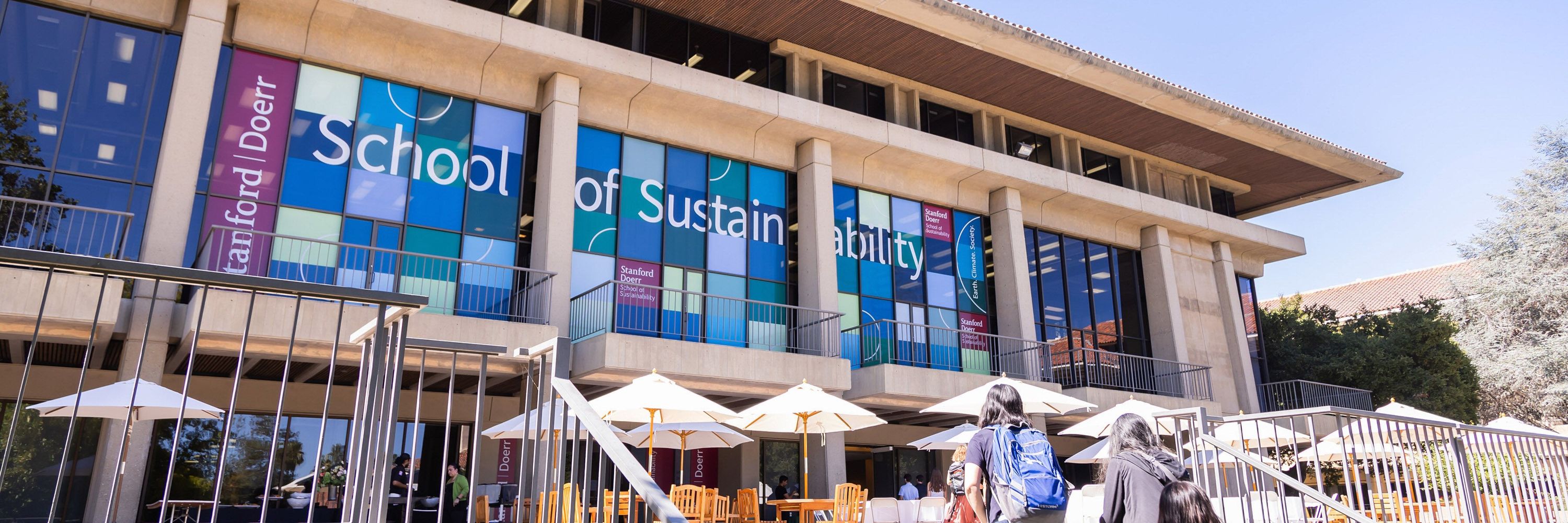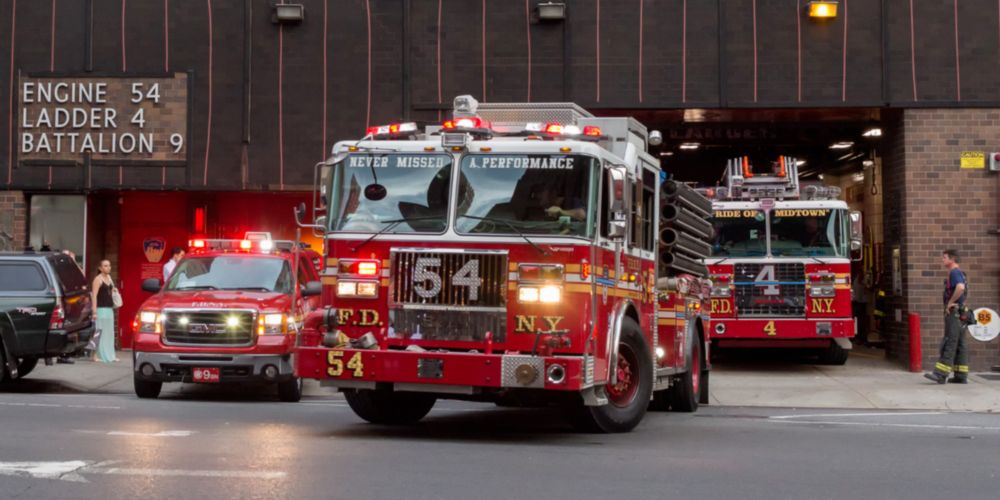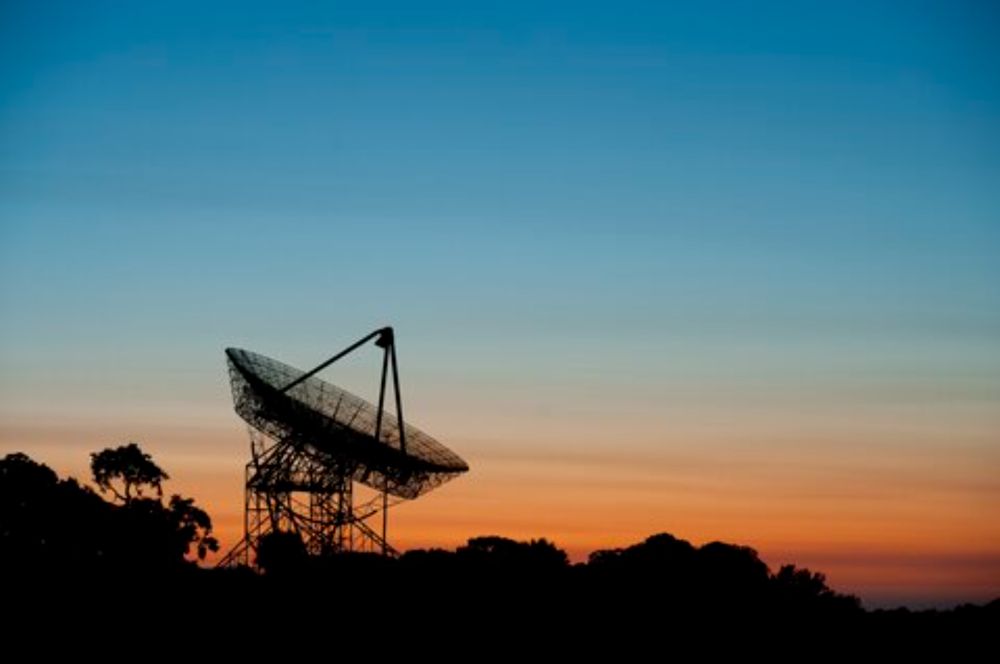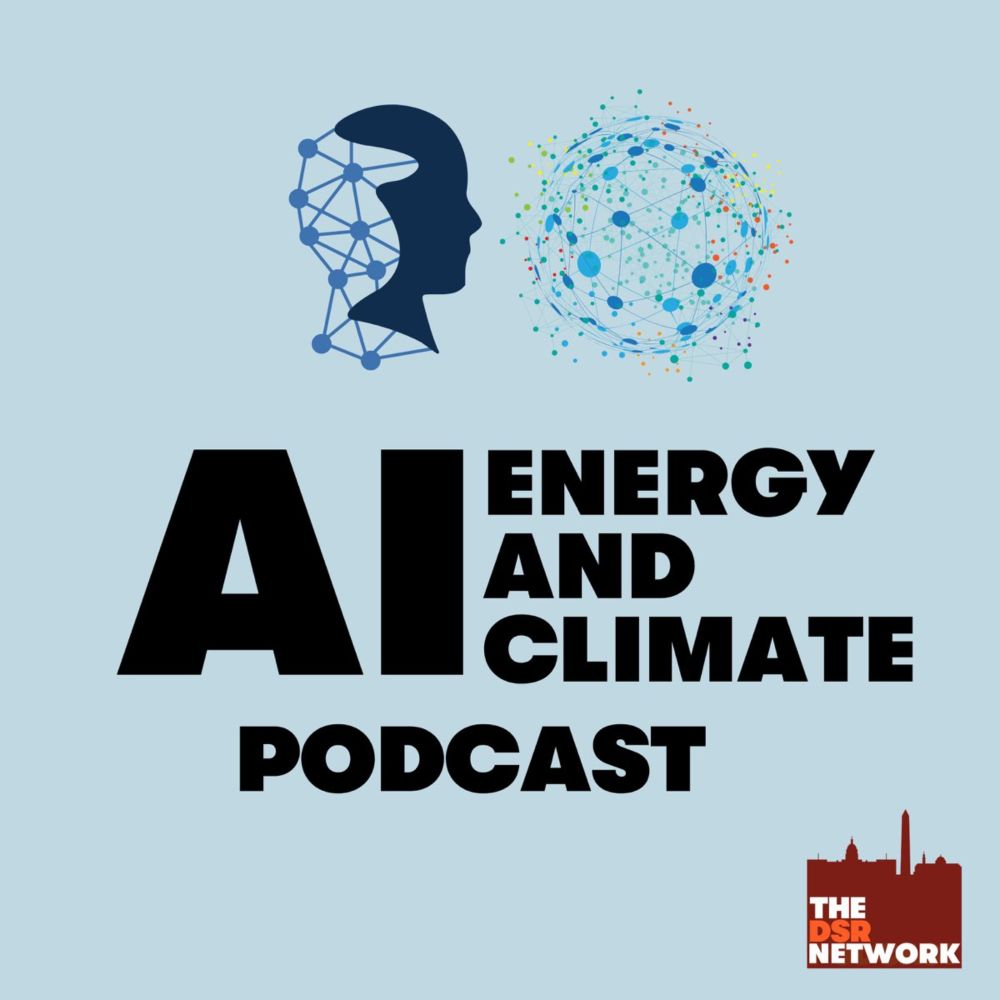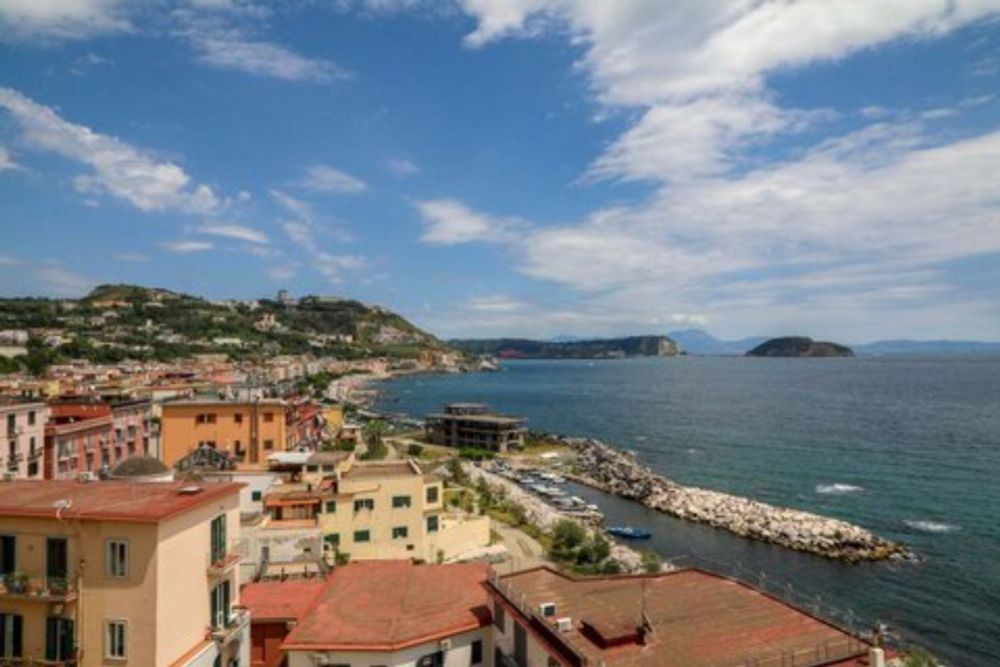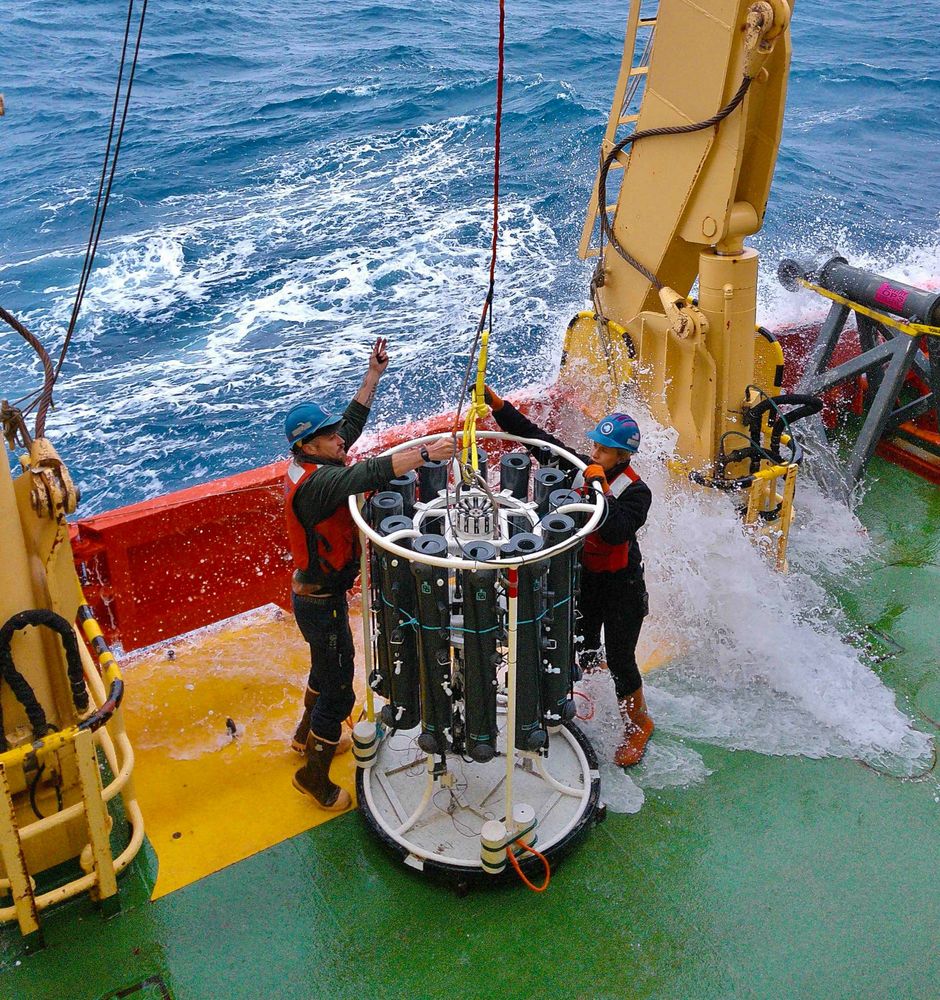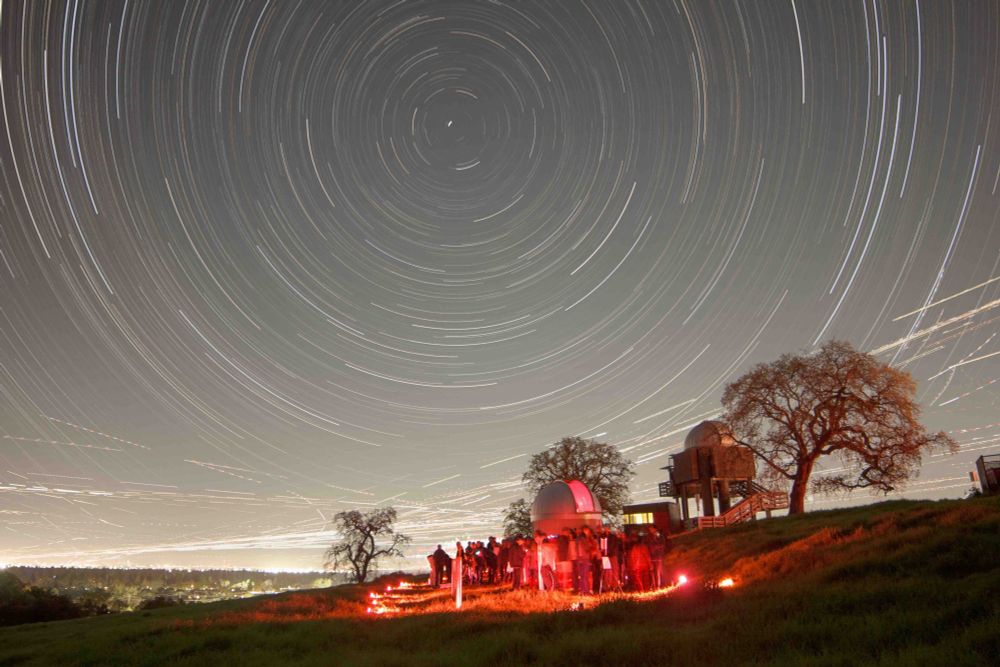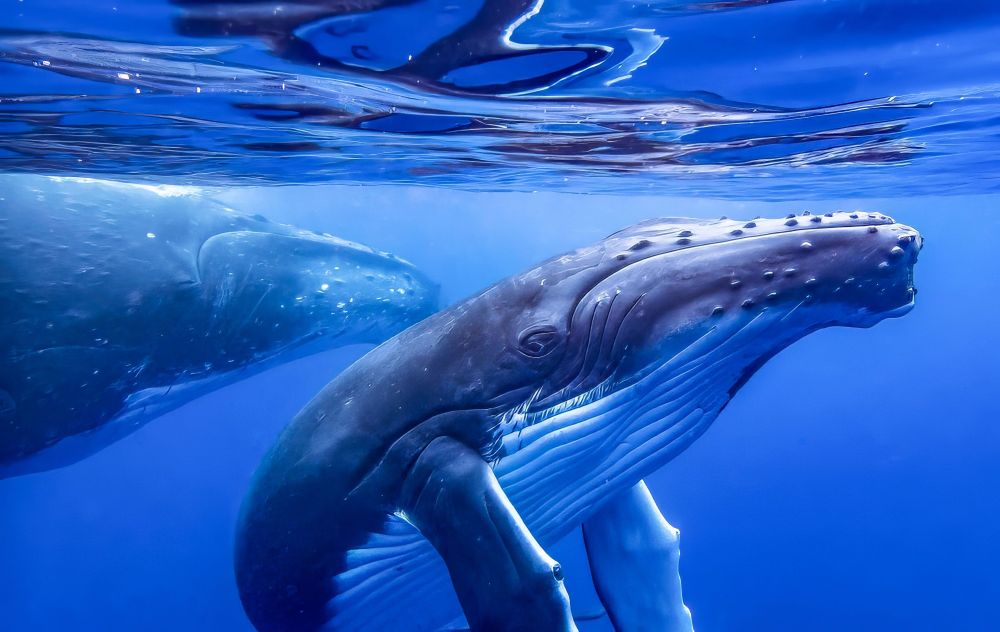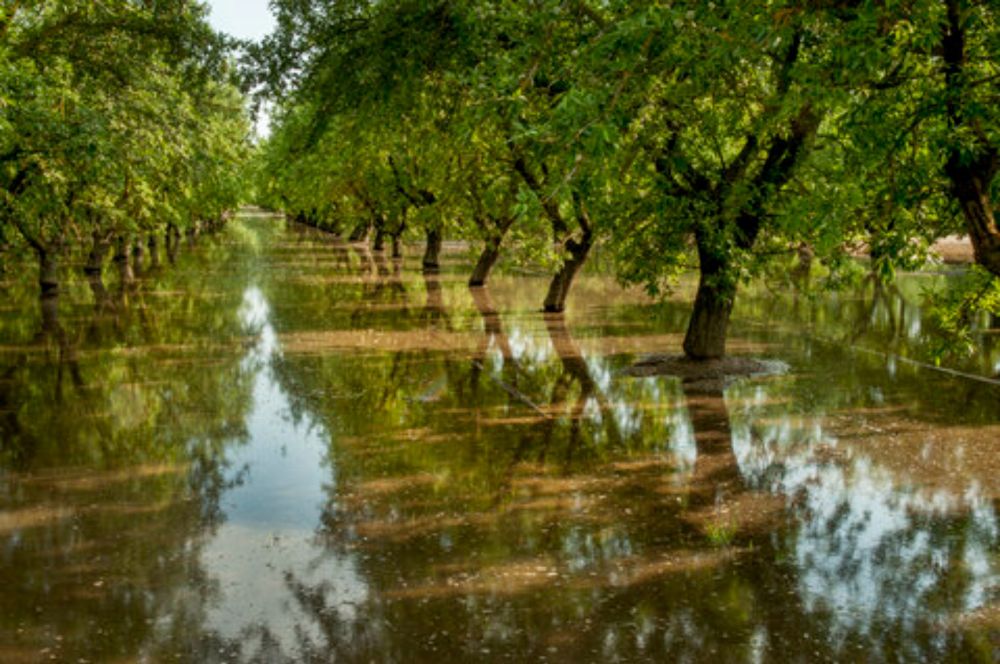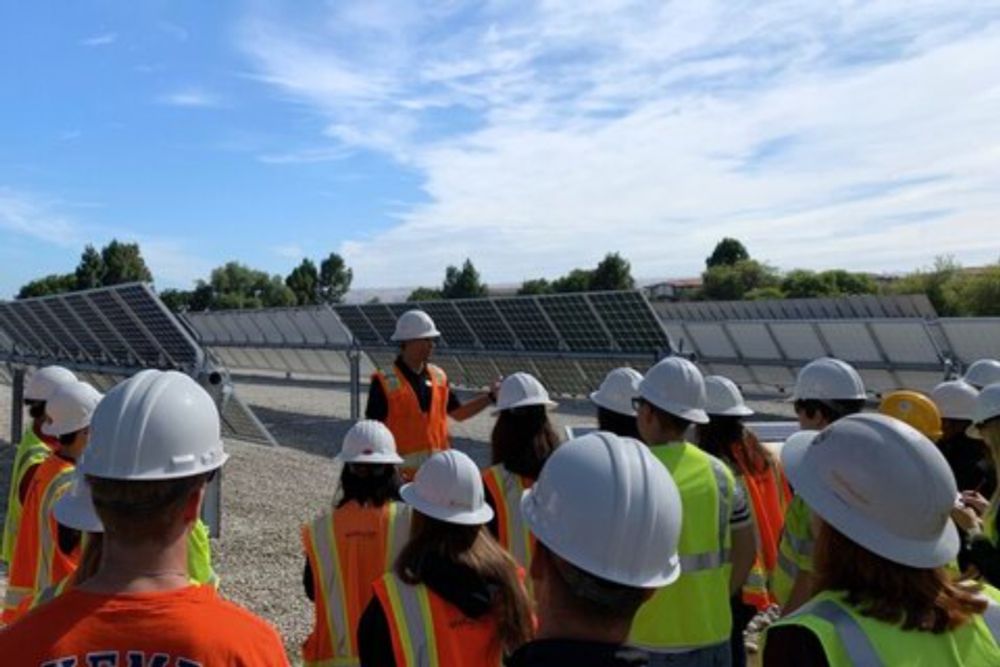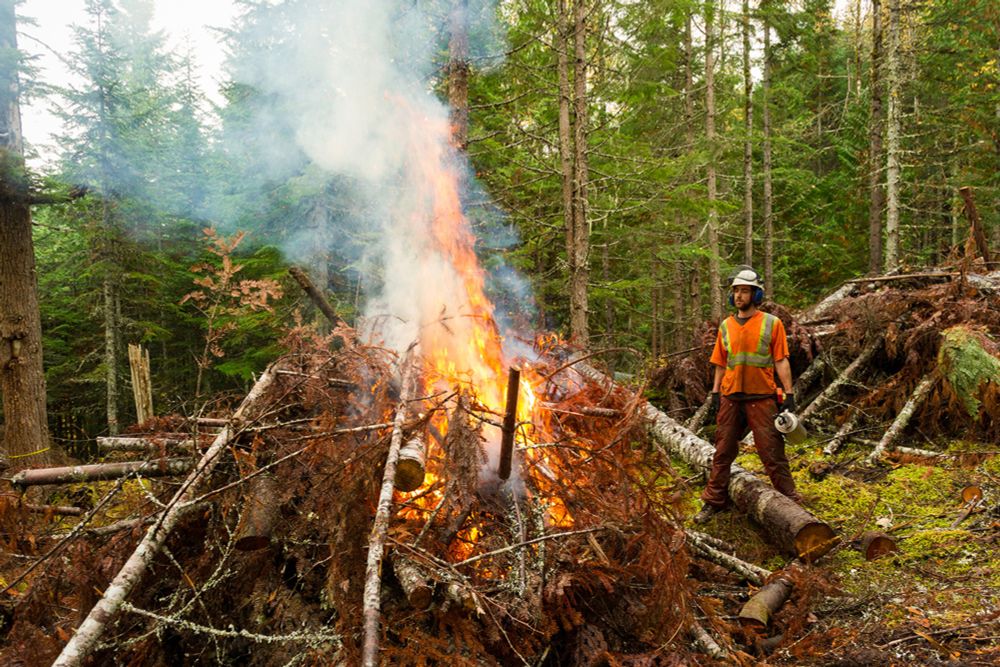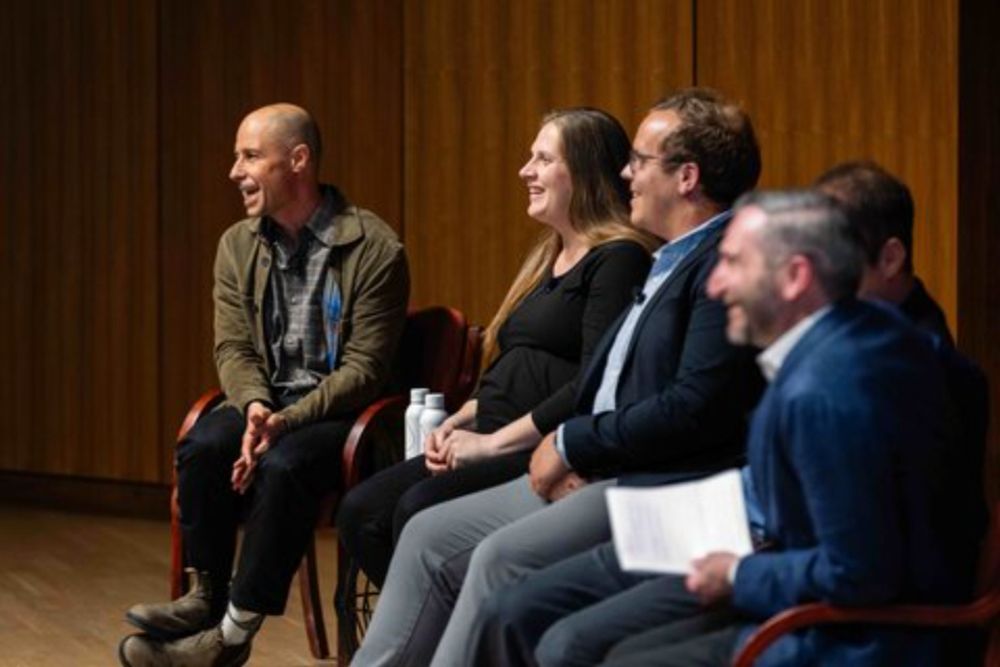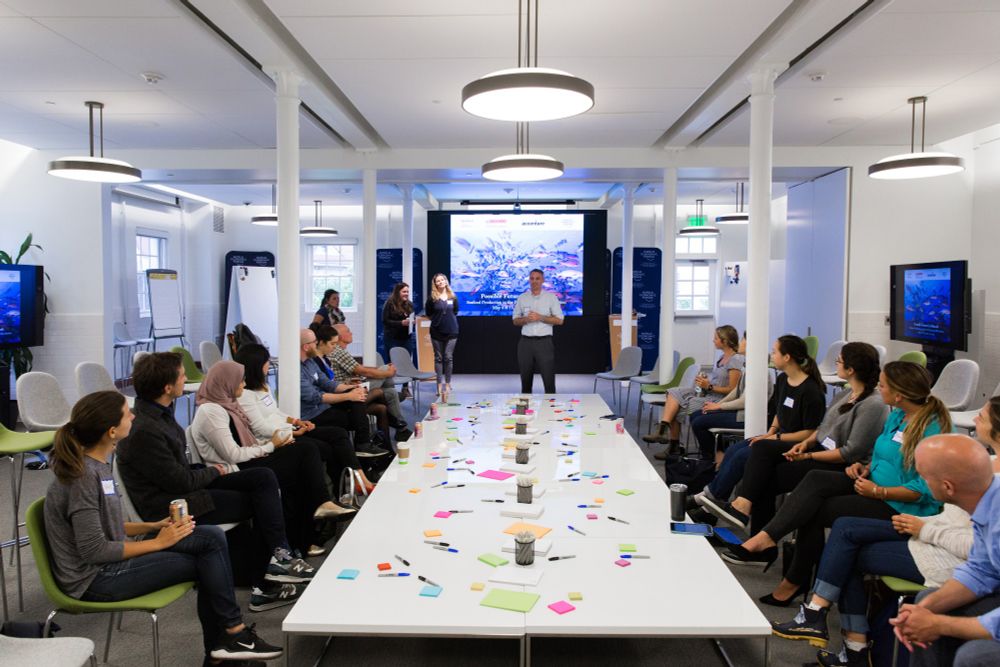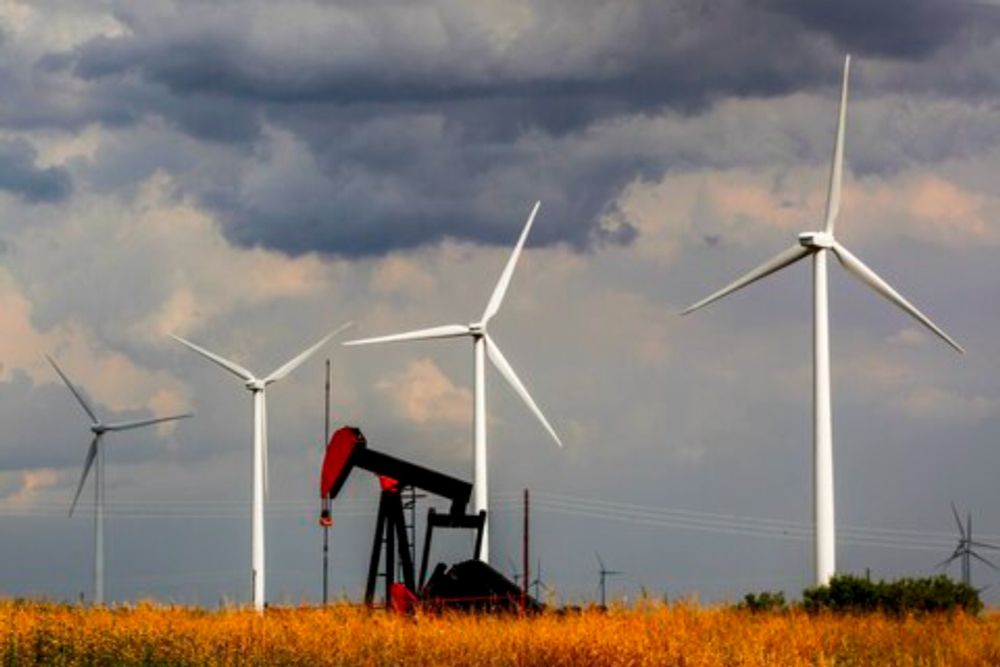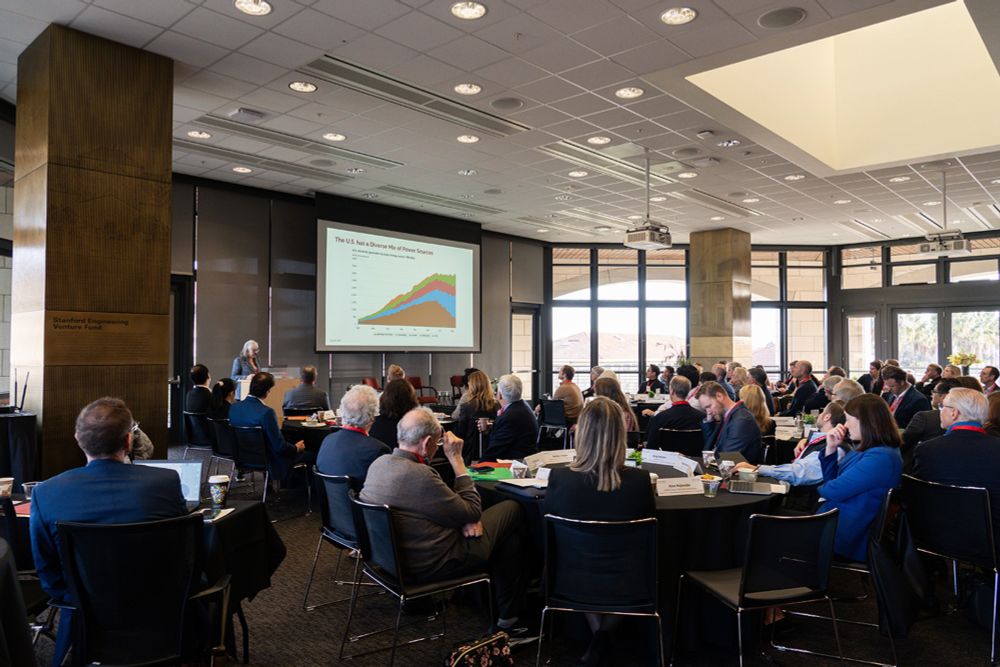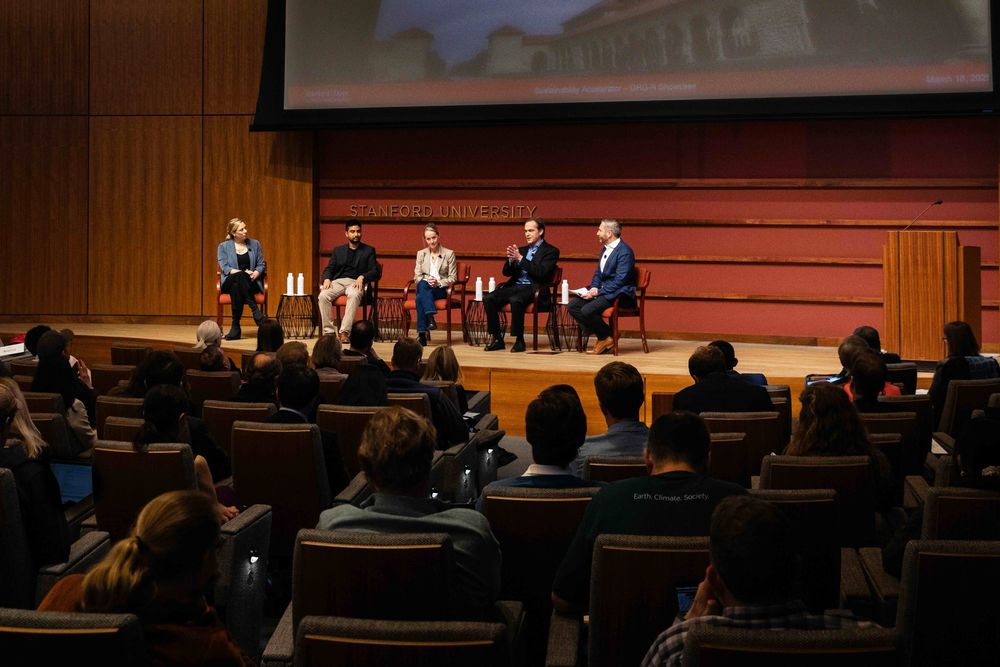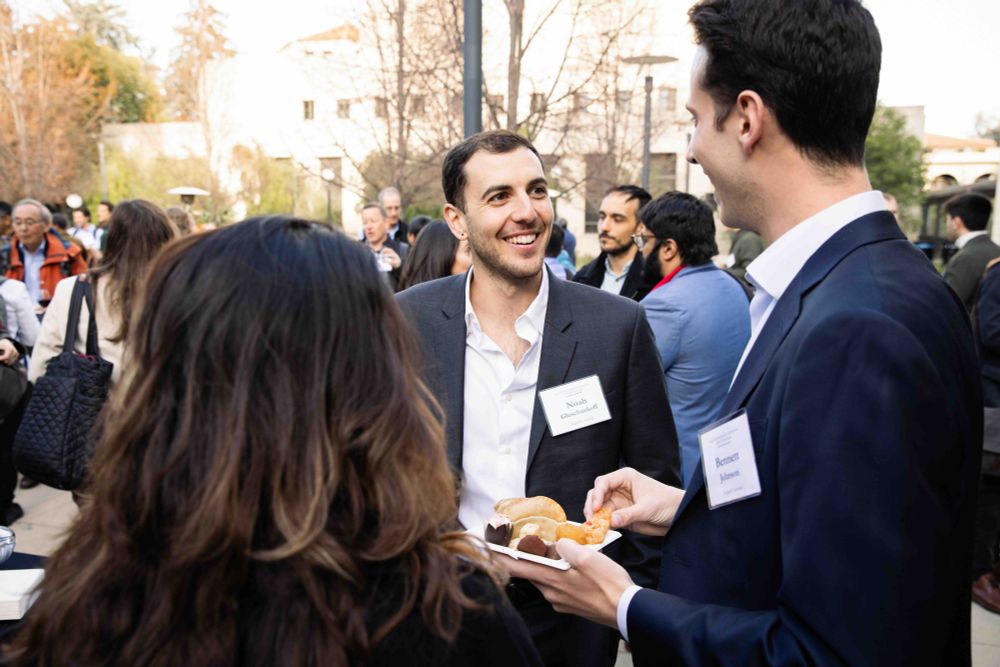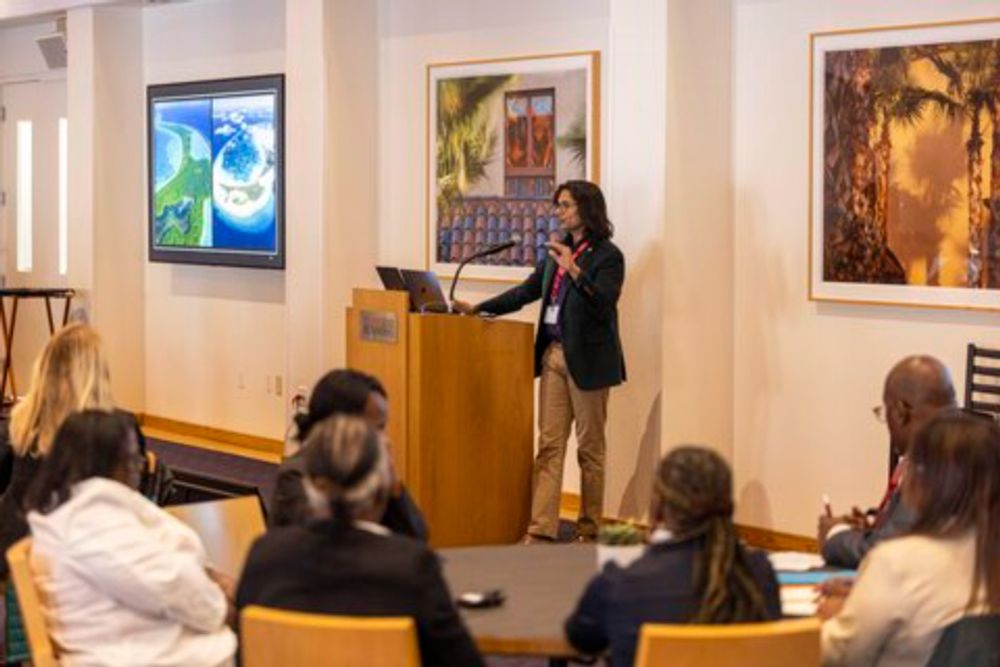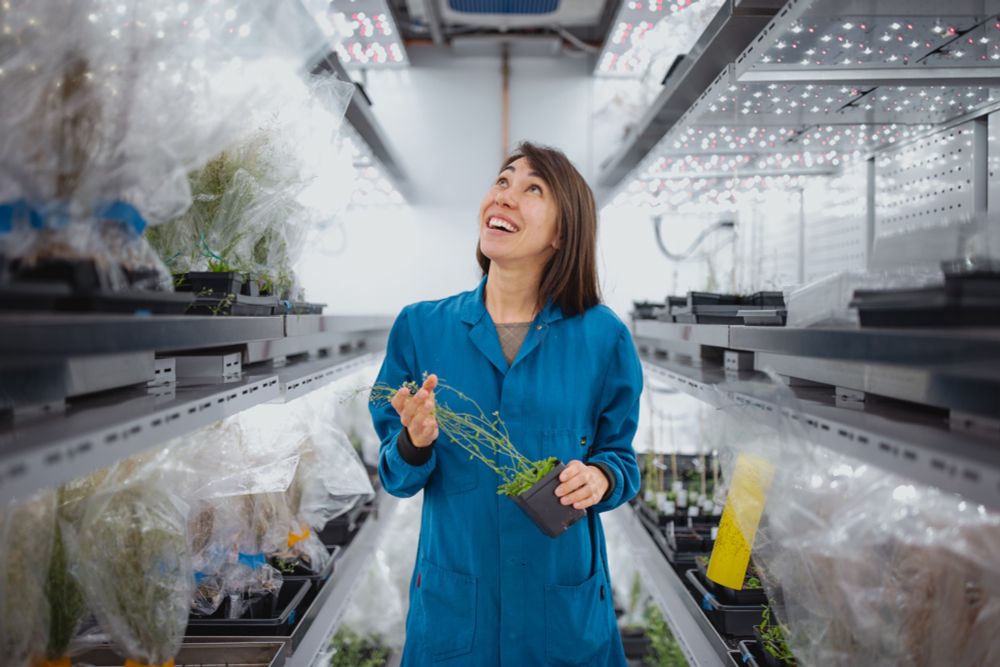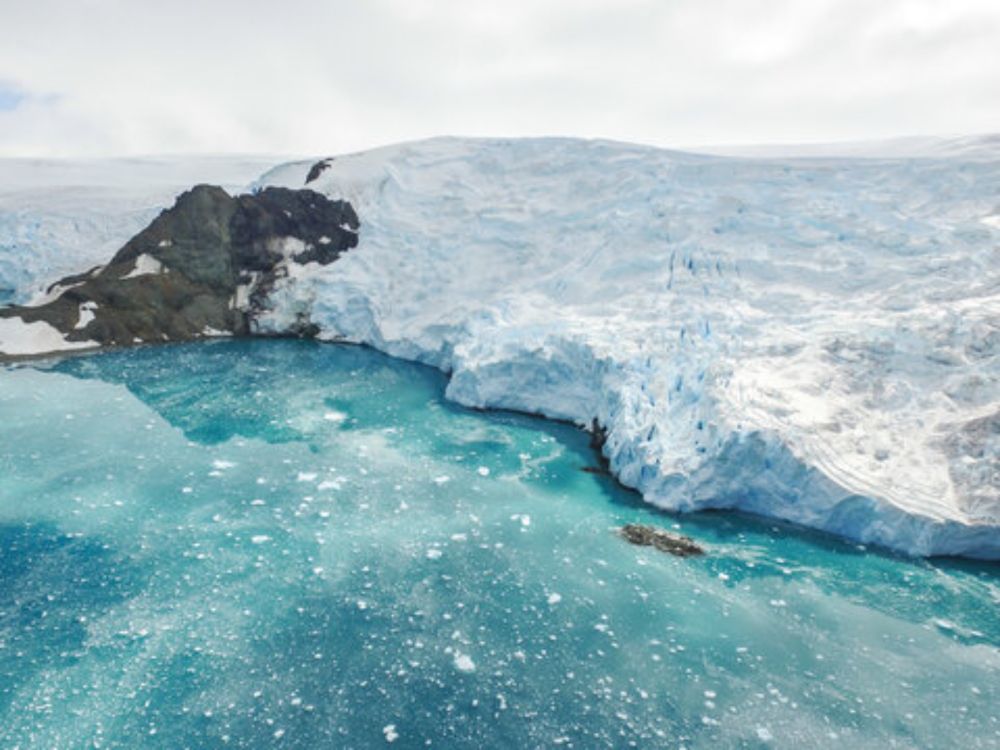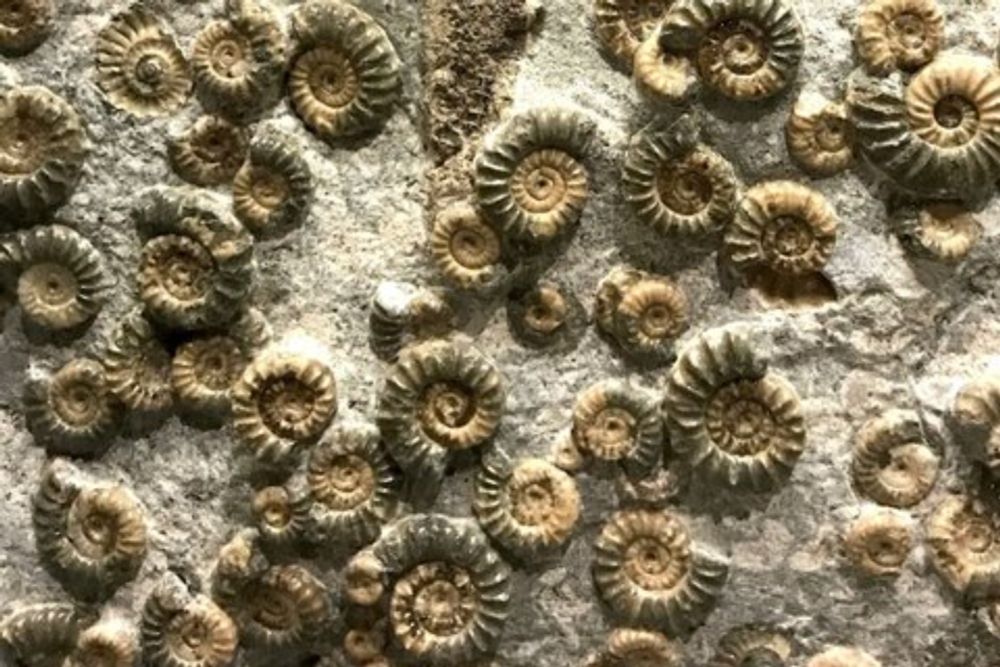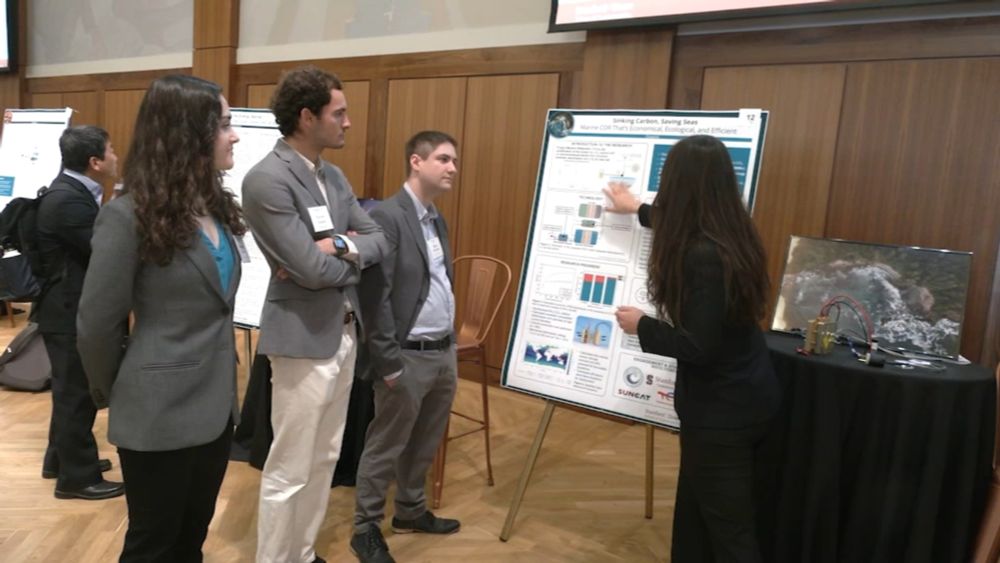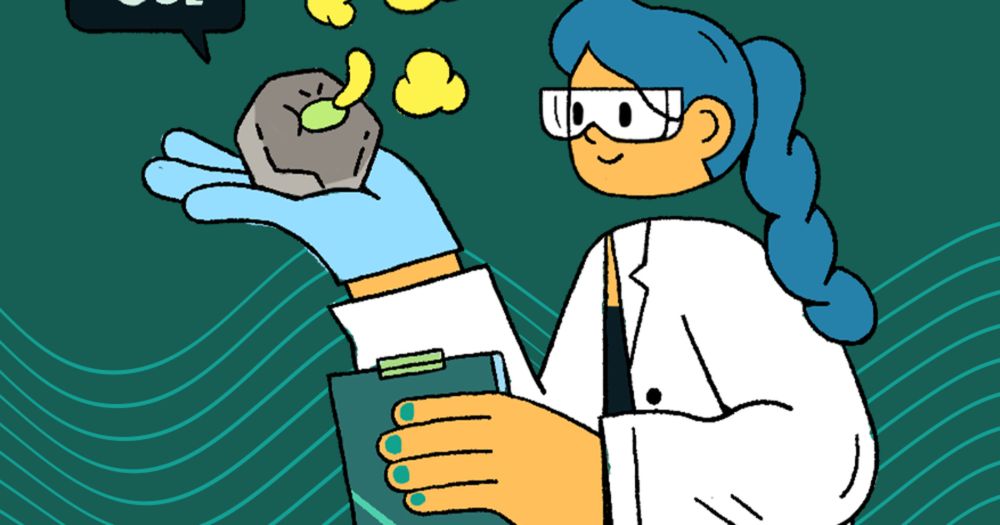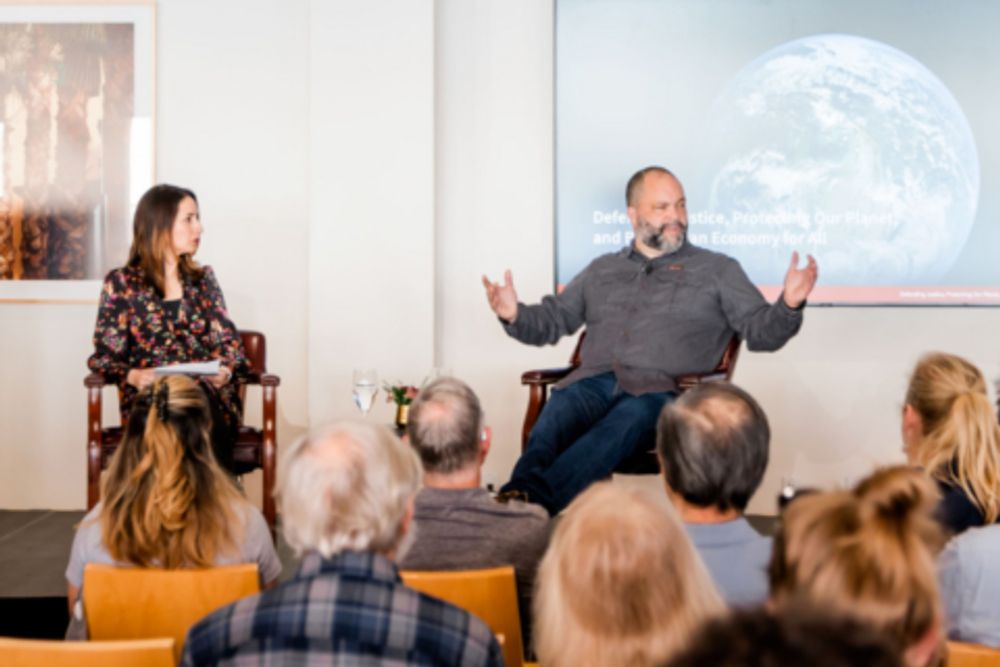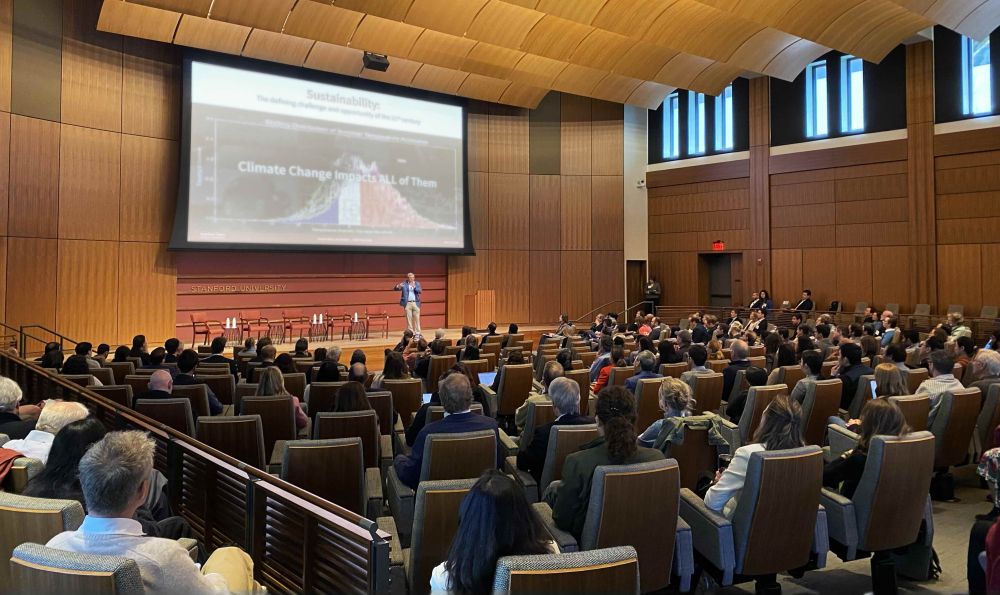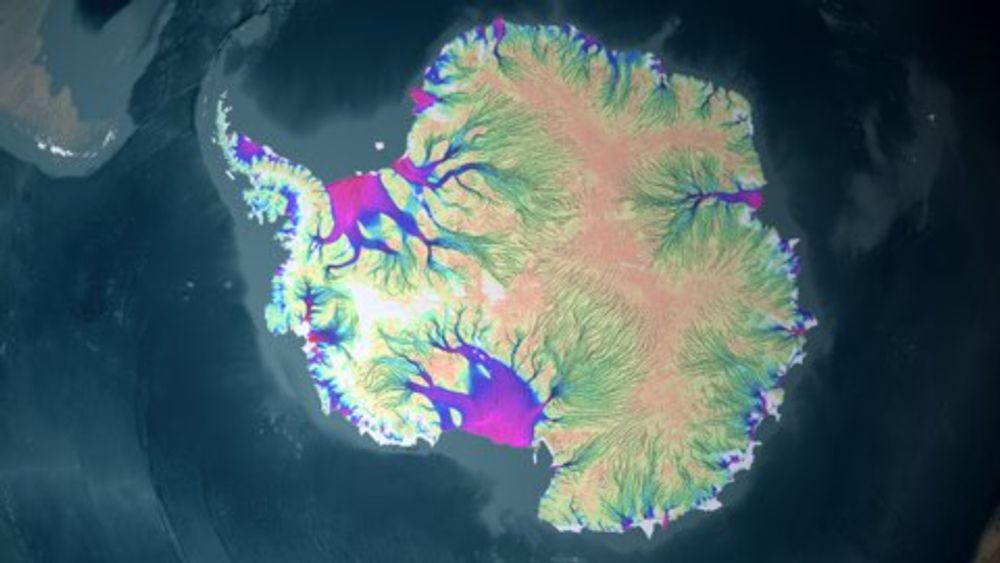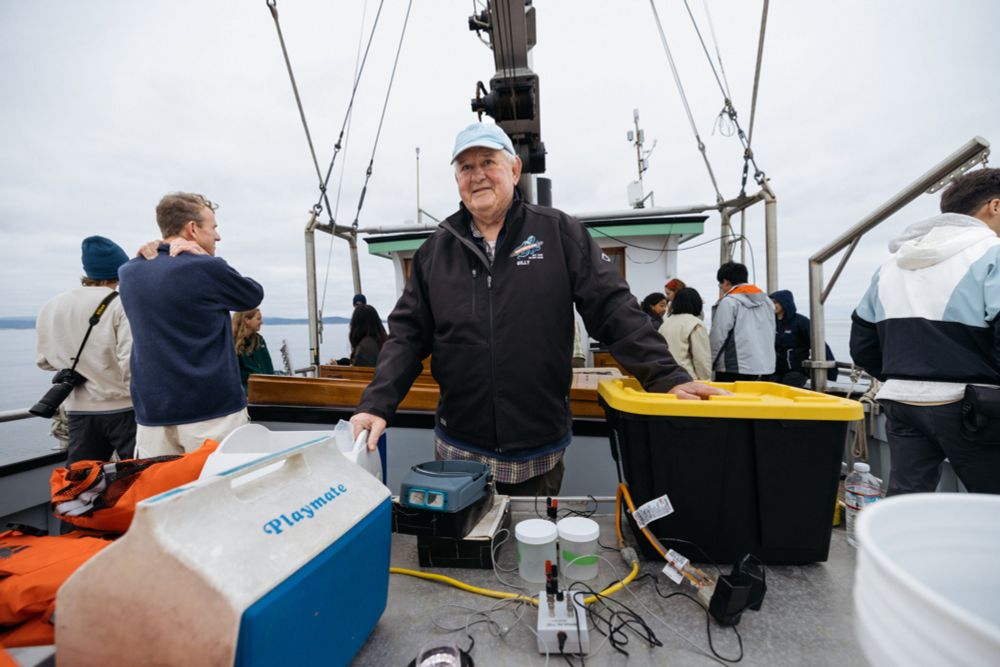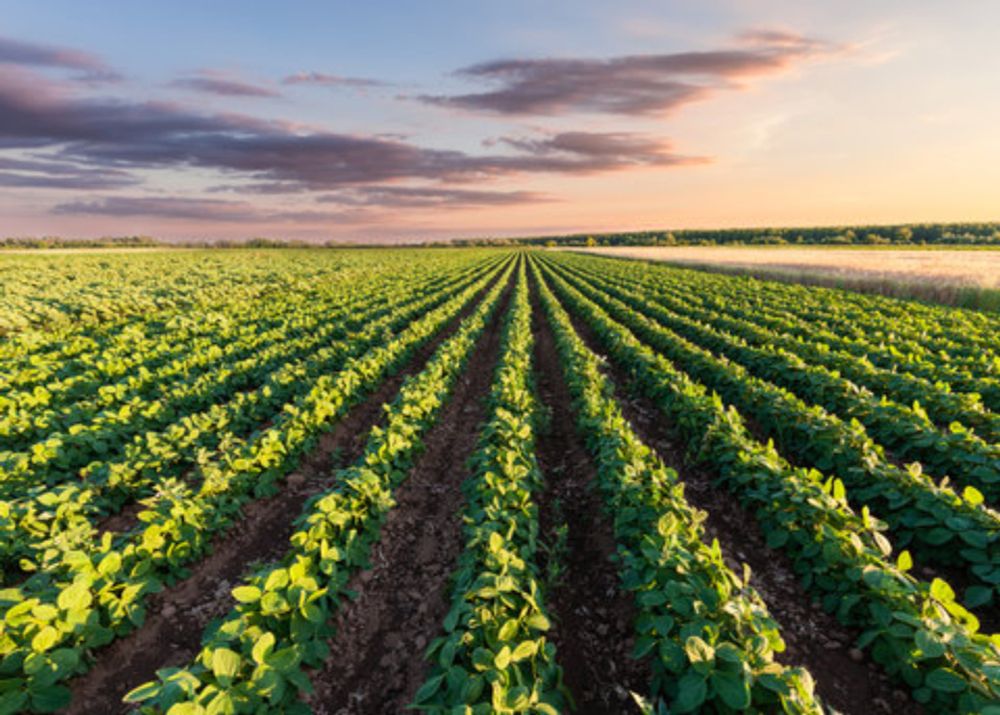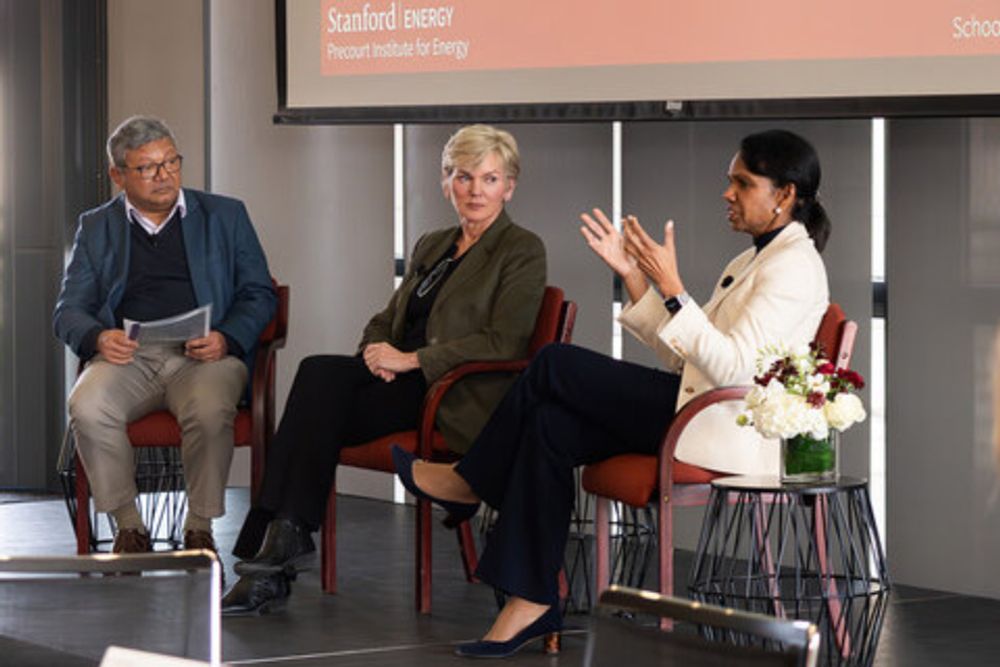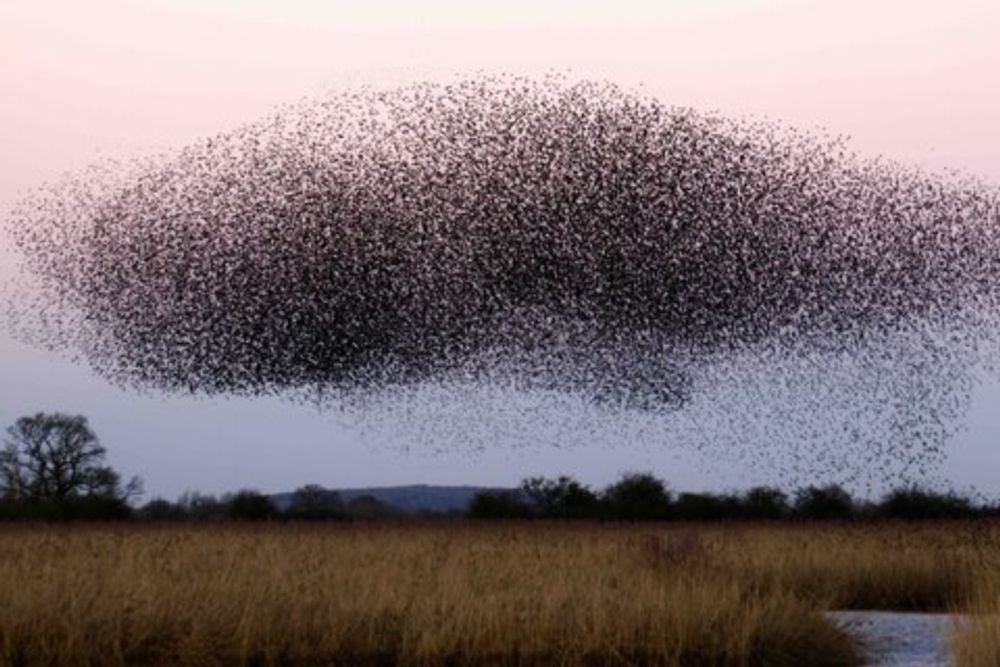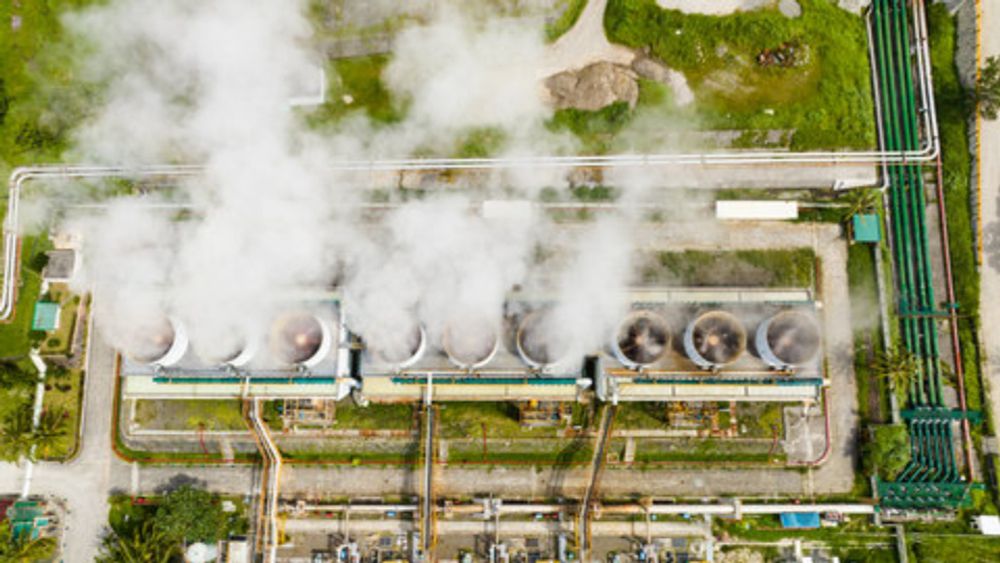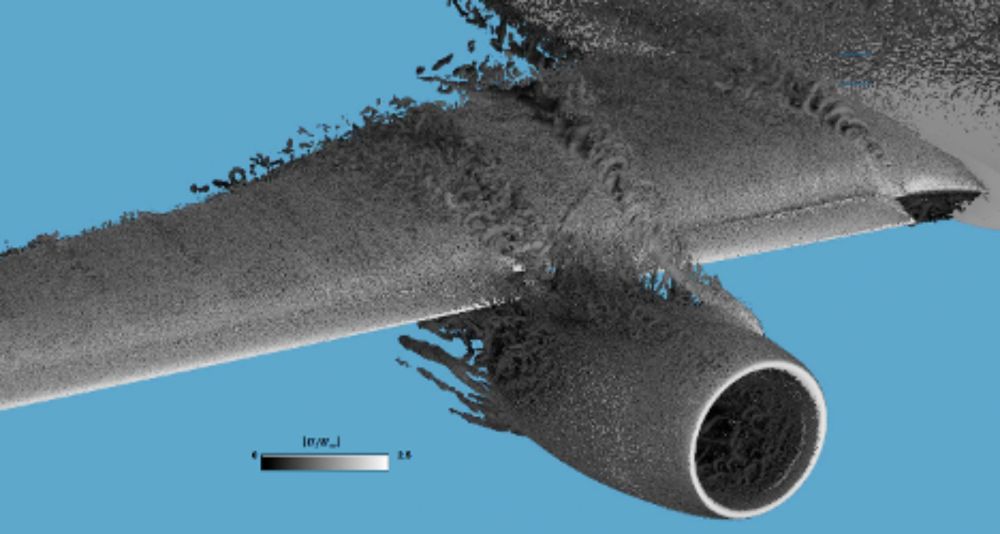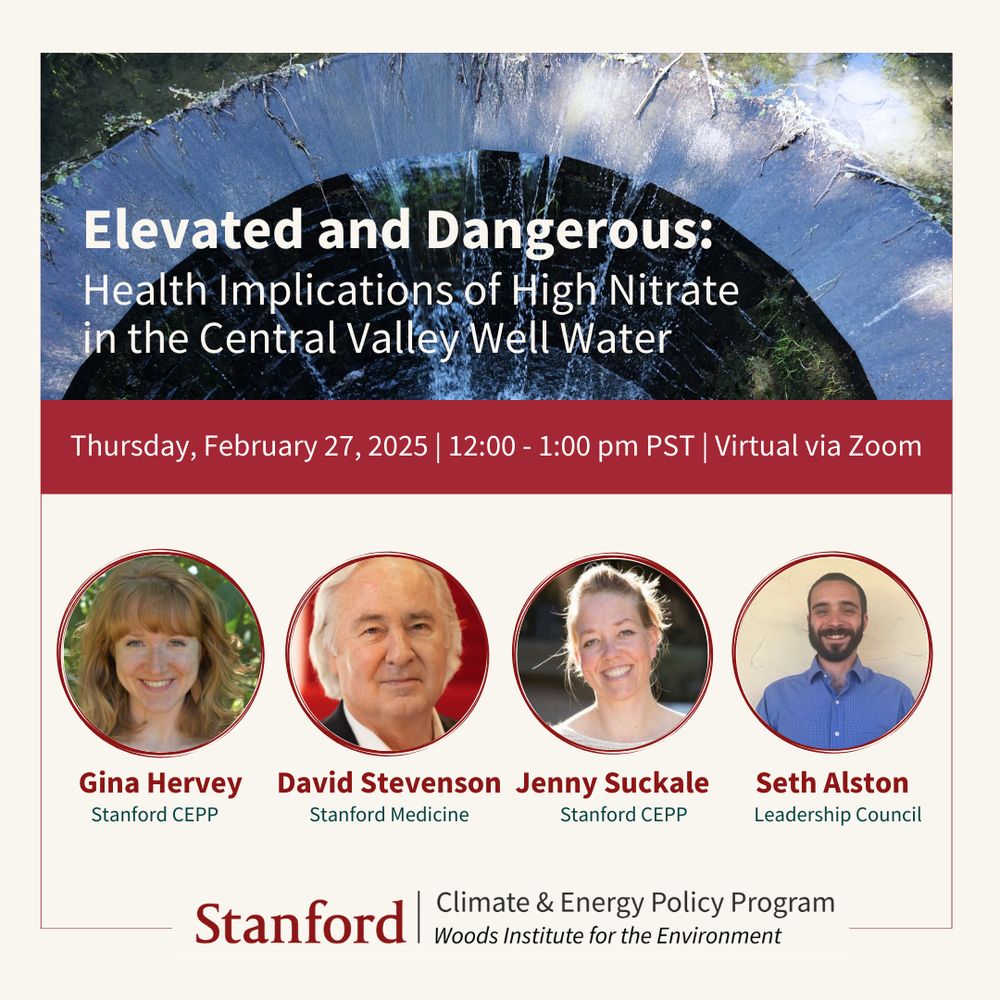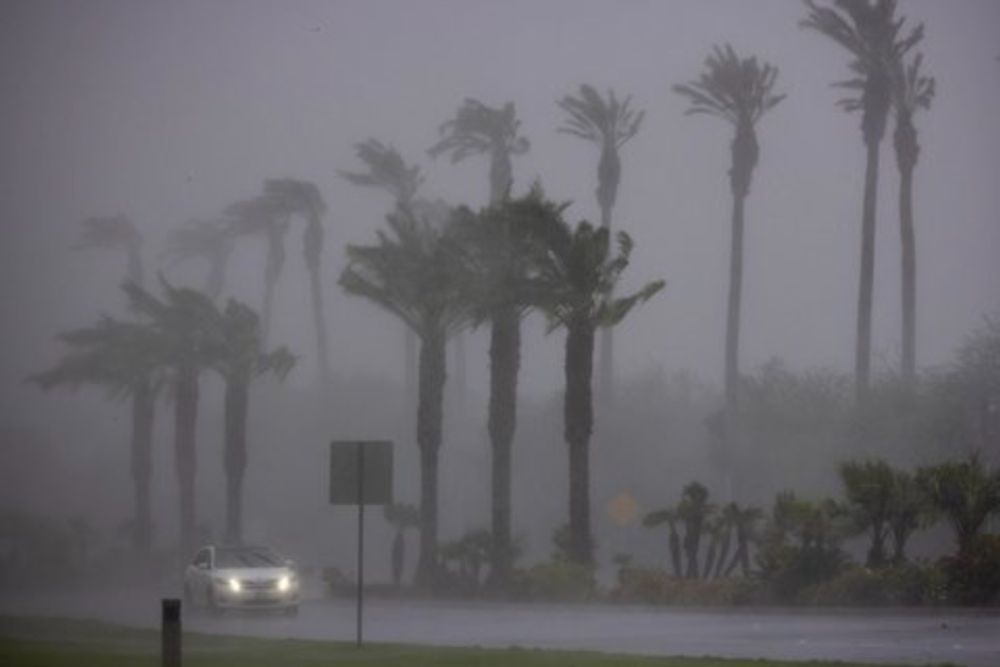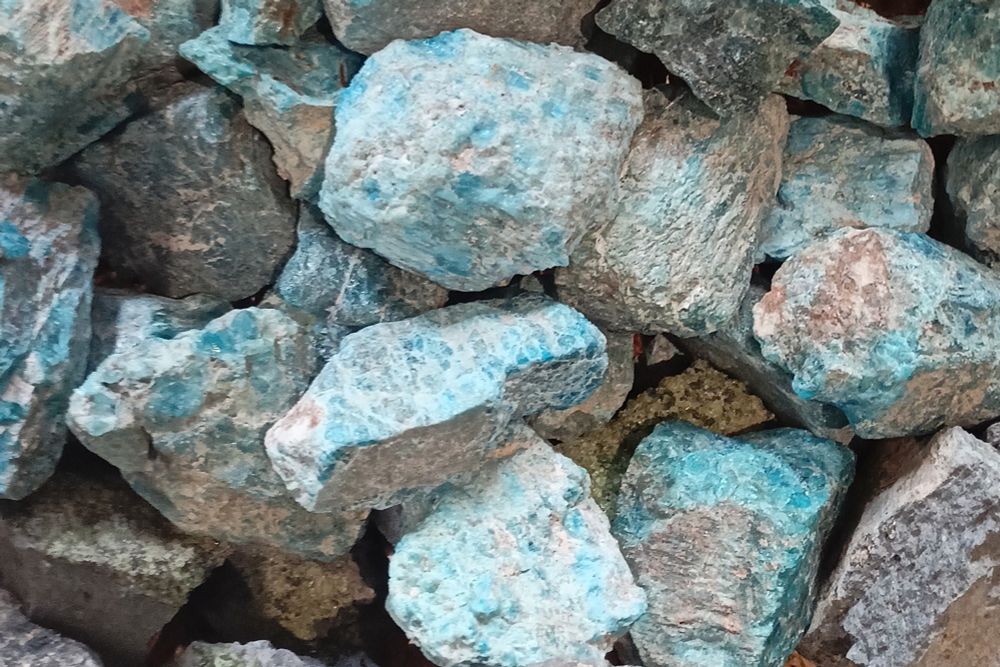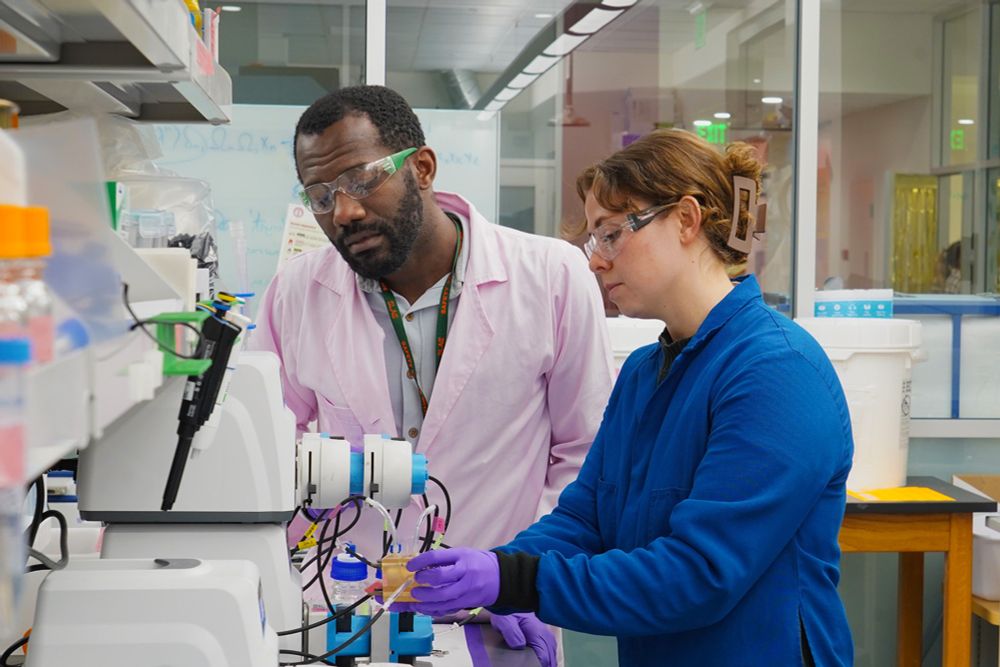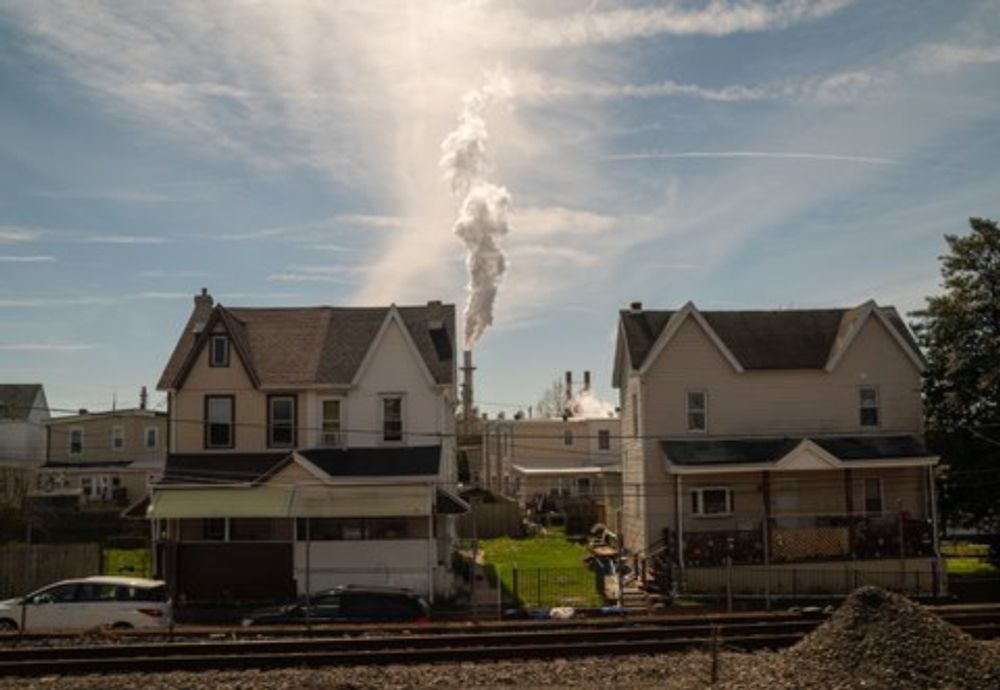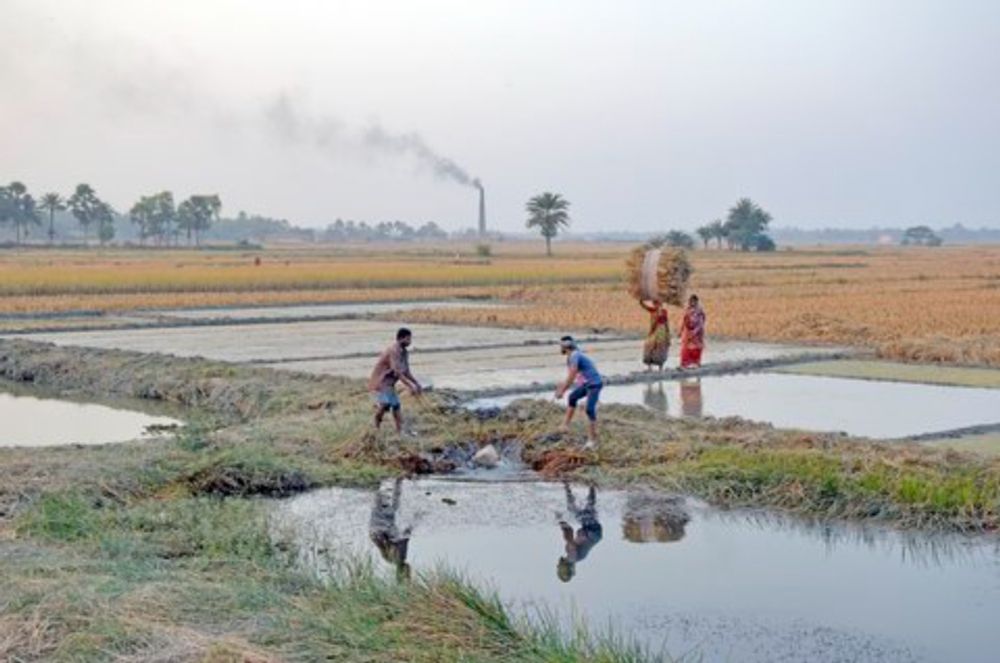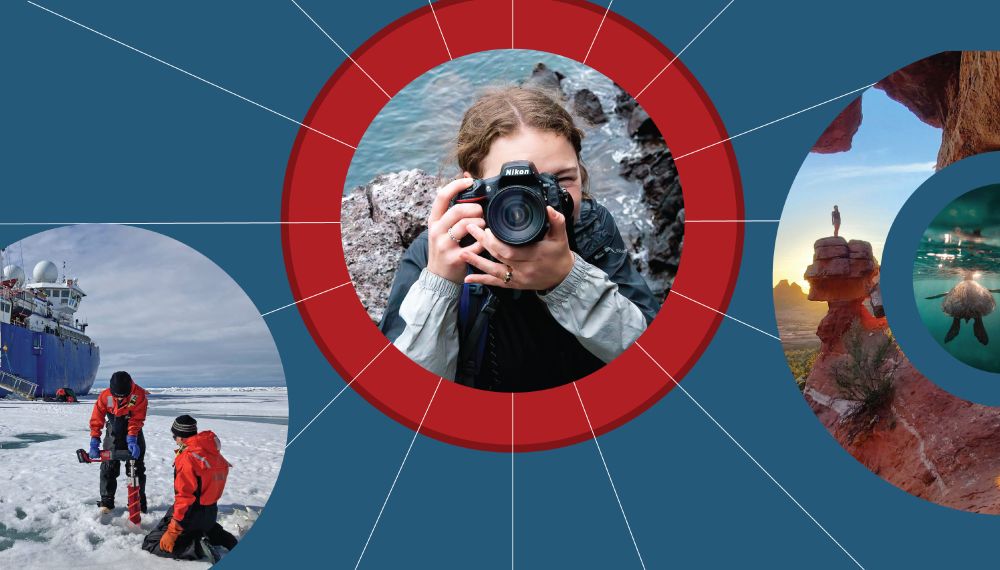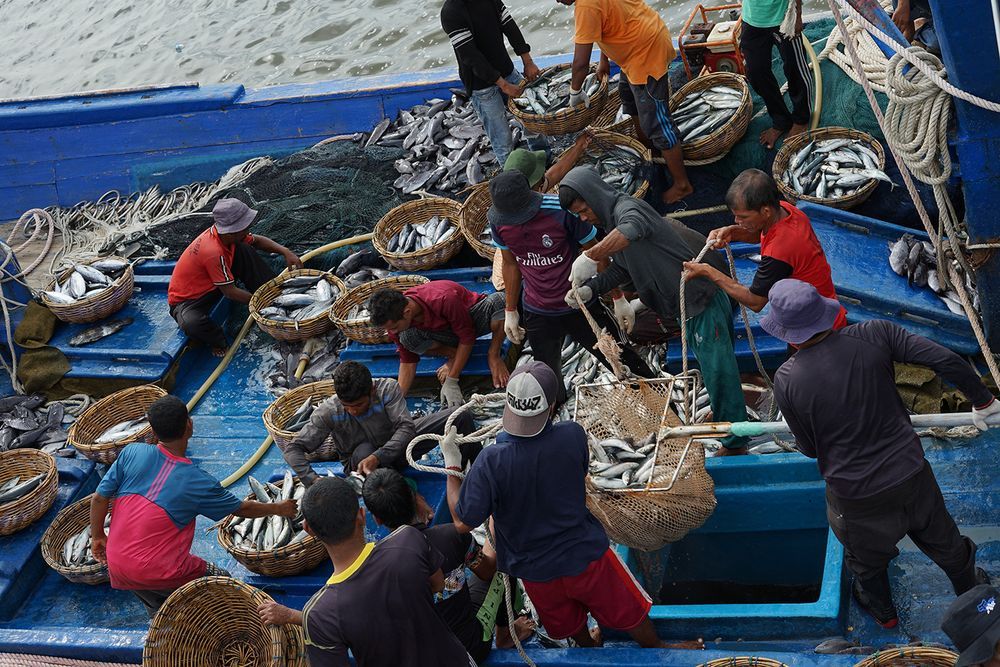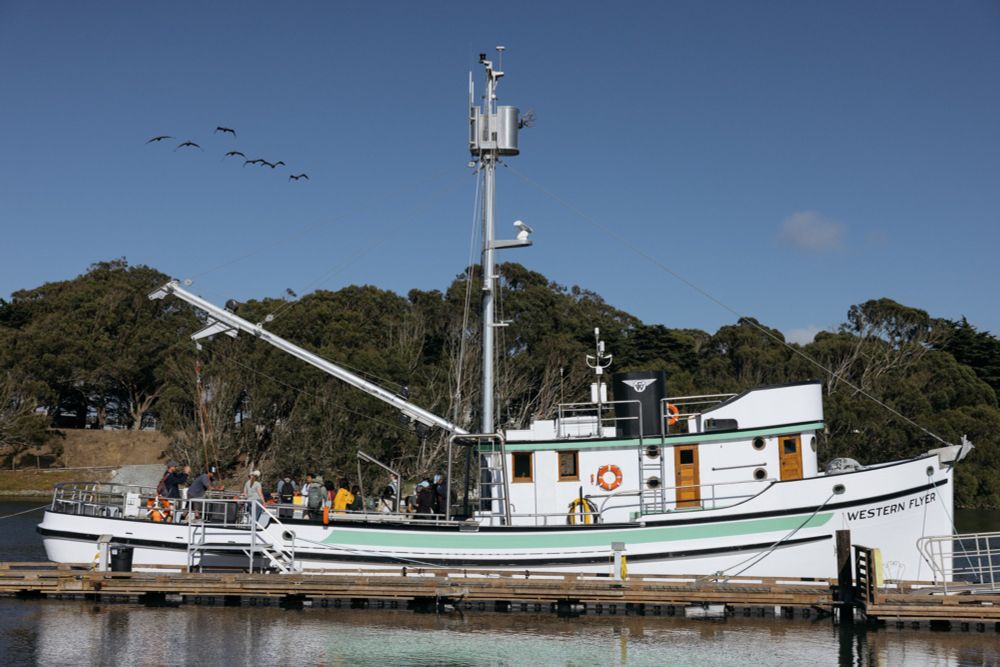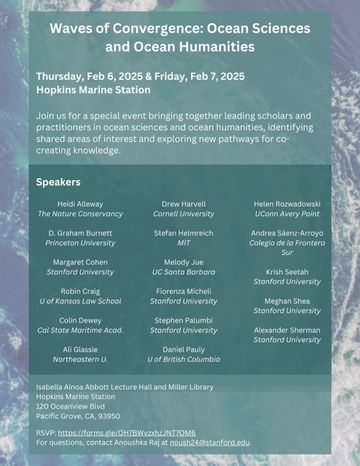Stanford Doerr School of Sustainability
- A “whole of society” approach: Addressing wildfire risk in California requires solutions that start at the community level, said @stanfordwoods.bsky.social wildfire policy expert @michaelwara.bsky.social in this podcast episode ⬇️
- 📡 Around the world, sensors deployed on satellites, in soil, and in water collect valuable data about human & planetary health. Integrating these technologies across land, freshwater, and ocean environments can provide insights to advance solutions, said participants in a recent conference.
- In a recent podcast episode, Dean Arun Majumdar discusses AI in energy and climate research ⬇️
- What does #AI mean for the future of clean energy and how we train the people building it? @stanforddoerr.bsky.social's Dr. Arun Majumdar joins host @davidsandalow.bsky.social on @thedsrnetwork.bsky.social to discuss cutting-edge AI research and rethinking education in the AI era. Listen in 🎧👇
- It’s commonly believed that the frequent earthquakes and land deformation at Italy’s Campi Flegrei volcanic area are caused by magma or its gases. New findings have uncovered a different explanation – and could be the key to reducing risks for nearby communities.
- Our 2025 photo contest results are in 📸 Explore action, beauty, and nature from the perspectives of Stanford community members: stanford.io/42sbSkW Image credits: Cara Askren, Peter Marinos, Max Kessler, Laurie LaPat-Polasko
- More groundwater in California’s Central Valley is being pumped out than replenished. Now, new research provides valuable insights for restoring aquifers – identifying areas where surface water can sink into the ground at the fastest rate.
- This #EarthDay, we asked school community members what energizes them about climate and sustainability work. Here’s what they had to say:
- From low-cost air conditioners to technologies for monitoring methane emissions, 25 projects will receive funding and support from Stanford’s Sustainability Accelerator to strengthen climate adaptation and advance our understanding of Earth systems.
- Supported by Stanford’s Sustainability Accelerator, researchers have identified ways to perform prescribed burns that limit the release of harmful chemicals and could cut cancer risks from smoke exposure by over 50%.
- Stanford’s Sustainability Accelerator recently convened more than 300 researchers, investors, entrepreneurs, and alumni to learn about #greenhousegasremoval and how researchers are working to enable it on a large scale. Explore highlights:
- Reposted by Stanford Doerr School of SustainabilityThe Stanford Environmental Research Year in Review is here! bit.ly/Enviro-YIR-2... Read about all the 2024 highlights, including: 🌊 tracing #microplastics in the ocean 🔥 materials that protect homes from #wildfires 🪱 how #climatechange promotes diseases Browse the pubs: bit.ly/StanfordEnvi...
- Welcome, @oceansolutions.bsky.social! 🌊
- Shifting from fossil fuels to clean energy technologies would improve energy security and reduce trade risks for most nations, according to a new Stanford-led study in @natclimchange.bsky.social
- A new report shares 6 key ideas to address challenges in the U.S. electricity grid. It’s the result of a meeting organized by @stanfordenergy.bsky.social, which convened over 80 energy experts from different sectors and viewpoints.
- 18 innovative projects. 80+ scholars working across disciplines. A goal to remove billions of tons of CO2 each year by mid-century. The recent Stanford Sustainability #AcceleratorShowcase brought together researchers, investors, & entrepreneurs to advance #greenhousegasremoval. stanford.io/4jfi0T4
- Incorporating cultural heritage – such as objects, places of historical significance, rituals, and Indigenous knowledge systems – will be crucial in securing a sustainable future for island communities, representatives from across the Indian Ocean region said at a recent conference at Stanford.
- From climate change adaptations in agriculture to aquatic foods in sustainable food systems, here are a few ways that @stanforddoerr.bsky.social and other Stanford scholars are working to transform the way the world grows, distributes, and consumes food.
- To prepare for impacts of climate change like sea level rise from melting glaciers, scientists & governments need accurate climate models. A new study could help close the gap between climate predictions and observed conditions in the ocean around Antarctica.
- After a mass extinction 252 million years ago, a mysterious trend emerged among the surviving species. Stanford-led research now provides an explanation – and it could be key to understanding the current mass extinction brought on by human activity.
- Earthworms, kelp, and more: @axios.com reports on the cutting-edge greenhouse gas removal projects being supported by Stanford’s Sustainability Accelerator.
- Arun Majumdar, dean of @stanforddoerr.bsky.social, and scholars discuss the “exponential force” of researchers collaborating to advance climate innovations at the recent Stanford Sustainability #AcceleratorShowcase @abc7news.bsky.social
- Innovative, high-risk, potentially high-reward: Here are four of the research projects supported by Stanford’s Sustainability Accelerator that aim to remove billions of tons of CO2 annually by mid-century.
- At a recent event, @sierraclub.org executive director @benjealous.bsky.social called for a more inclusive environmental movement. Addressing the extinction & climate crises we’re facing, he said, requires “uncomfortably large coalitions”—broad alliances across racial, cultural, & political divides.
- At the first-ever @stanforddoerr.bsky.social Sustainability #AcceleratorShowcase today, industry experts and leaders discussed #greenhousegasremoval innovations, scaling, and funding for impact. Stay tuned on our channels for highlights and insights from the inaugural event.
- At the inaugural @stanforddoerr.bsky.social Sustainability #AcceleratorShowcase today, researchers, industry leaders, and policy makers are gathering to advance innovative solutions in #greenhousegasremoval. Learn about the Accelerator: stanford.io/3EUpMmA
- A first-of-its-kind analysis revealed gaps in our understanding of how Antarctic ice is moving and melting. The findings could improve predictions about the conditions we may face in the future.
- Activity books, card games, Minecraft, and a mobile tide pool: Here’s how Stanford marine scientists are educating the public about the ocean and inspiring community members to take action.
- A charcoal-like material derived from plant biomass could be a promising tool for carbon dioxide removal – but its true potential may be undervalued. A new study proposes a more accurate way to evaluate biochar projects. @stanfordwoods.bsky.social
- A new book edited by Oceans Professor Larry Crowder and co-authored by several Stanford scholars champions a vision for marine conservation that brings together the natural & social sciences; Western & Indigenous knowledge systems; and academic & community insights. Reflections from co-authors:
- Over 80 energy experts recently gathered at Stanford to discuss ways to modernize the U.S. electricity grid and meet future challenges. Read key takeaways:
- With new grants from the Stanford Doerr School of Sustainability, researchers will study topics like: 🌱 How different plants recover after extreme events 🧊 The effectiveness of a strategy to protect vulnerable glaciers ⚓ How shipwrecks impact ocean ecosystems and more
- Less than half of 1% of the global electricity supply currently comes from geothermal, generated using natural underground heat. But according to a recent paper, that share has the potential to increase significantly. Here’s how:
- What does the movement of ocean currents have to do with extreme wind around high-rises? Both involve turbulence, a phenomenon studied by Stanford scholars at the Center for Turbulence Research. Explore their work: stanford.io/3EY0d44
- Reposted by Stanford Doerr School of SustainabilityDairy farm #nitrogen pollution is tainting CA's water -- and it's linked to the potentially deadly blue baby syndrome. Stanford CEPP scholars found these nitrogen hotspots to match cases in MediCal billing codes. Read more: bit.ly/4hNYCMw Register for the Feb 27 webinar: bit.ly/432olMN
- “Potentially game-changing”: Researchers have developed a new way to measure groundwater by repurposing data collected to monitor earthquakes. It’s an innovative way to understand how rainfall, such as California’s deluge in 2023, impacts the persistence of drought conditions.
- A new process turns common minerals into materials that can permanently remove carbon from the atmosphere. With funding from the @stanforddoerr.bsky.social Sustainability Accelerator, scientists are now moving the research into practical applications. @stanfordenergy.bsky.social
- A recent study quantified the environmental impact of recycling lithium-ion batteries. Greenhouse gas emissions, energy consumption, and water usage were all significantly lower compared to mining new metals. @stanfordenergy.bsky.social
- Research finds that widespread deployment of technologies that pull carbon dioxide from the air & industrial flues would be much more expensive and damaging – in terms of energy costs, emissions, and health impacts – than a hypothetical worldwide switch to electricity & heat from renewable sources.
- In many parts of India, nitrogen dioxide pollution from coal-fired power stations drags down critical grain yields by 10% or more every year. Eliminating these emissions in impacted areas could add over $800 million annually in wheat and rice output.
- Calling all Stanford students, postdocs, faculty, staff, and alumni 📢 Submit your photos highlighting action, impact, and nature to our 2025 photo contest. Details: bit.ly/SDSS-photo-c...
- Reposted by Stanford Doerr School of SustainabilityDavid Cohen, a @Stanford.edu #HumanRights expert and co-director of our #SoutheastAsia Program is co-leading a joint effort of @stanforddoerr.bsky.social + #Indonesia to sustainably produce #BlueFoods and protect livelihoods, integrating #SustainableDevelopment and social justice.
- Over 80 years ago, author John Steinbeck voyaged to the Sea of Cortez on a trip that inspired one of his most celebrated works of nonfiction. The same boat from that expedition is now restored and serves as a classroom, immersing students in the science and stories of the sea.
- Reposted by Stanford Doerr School of SustainabilityHead over to the Hopkins Marine Station on Thursday, Feb. 6 and Friday, Feb. 7 for a conference about the convergence of #ocean sciences and humanities. Register here to learn from leading scholars: forms.gle/kCt99vMxEaCp... Read more about the discipline: woods.stanford.edu/research/fun...
